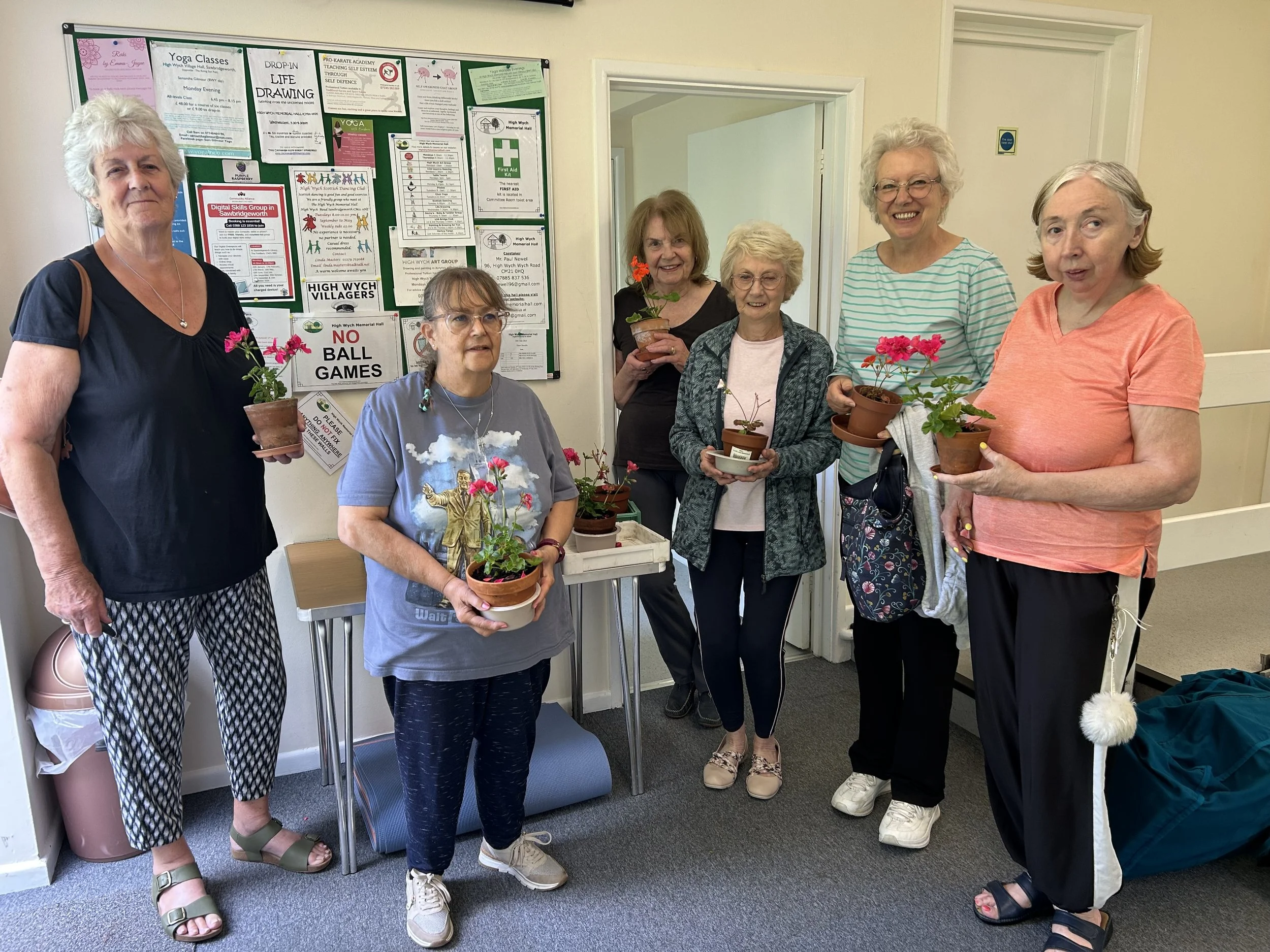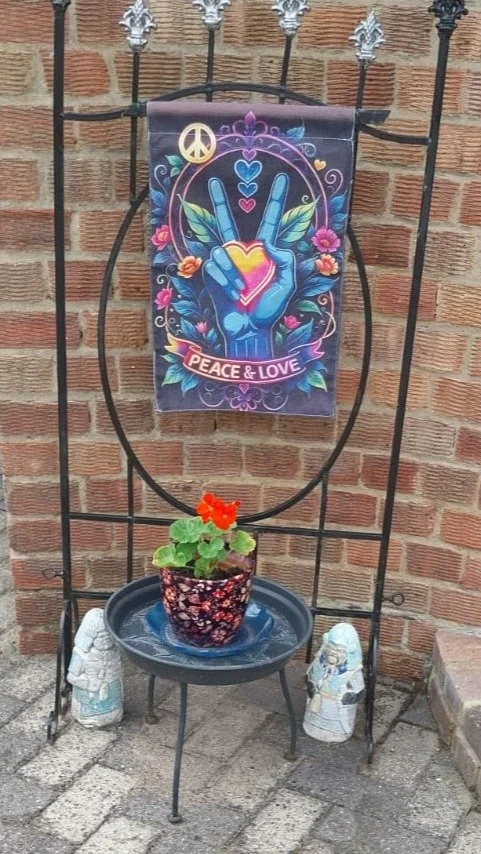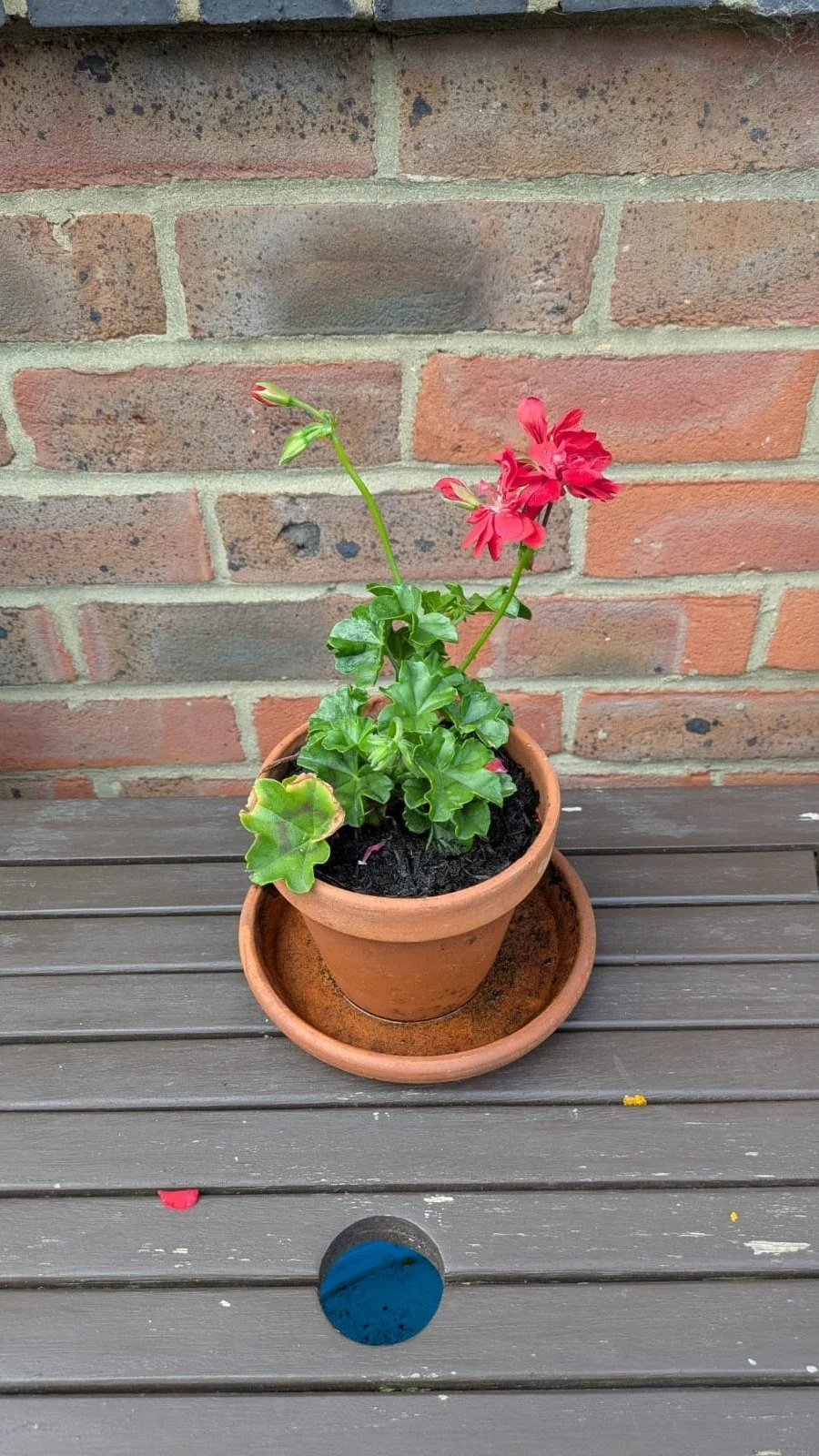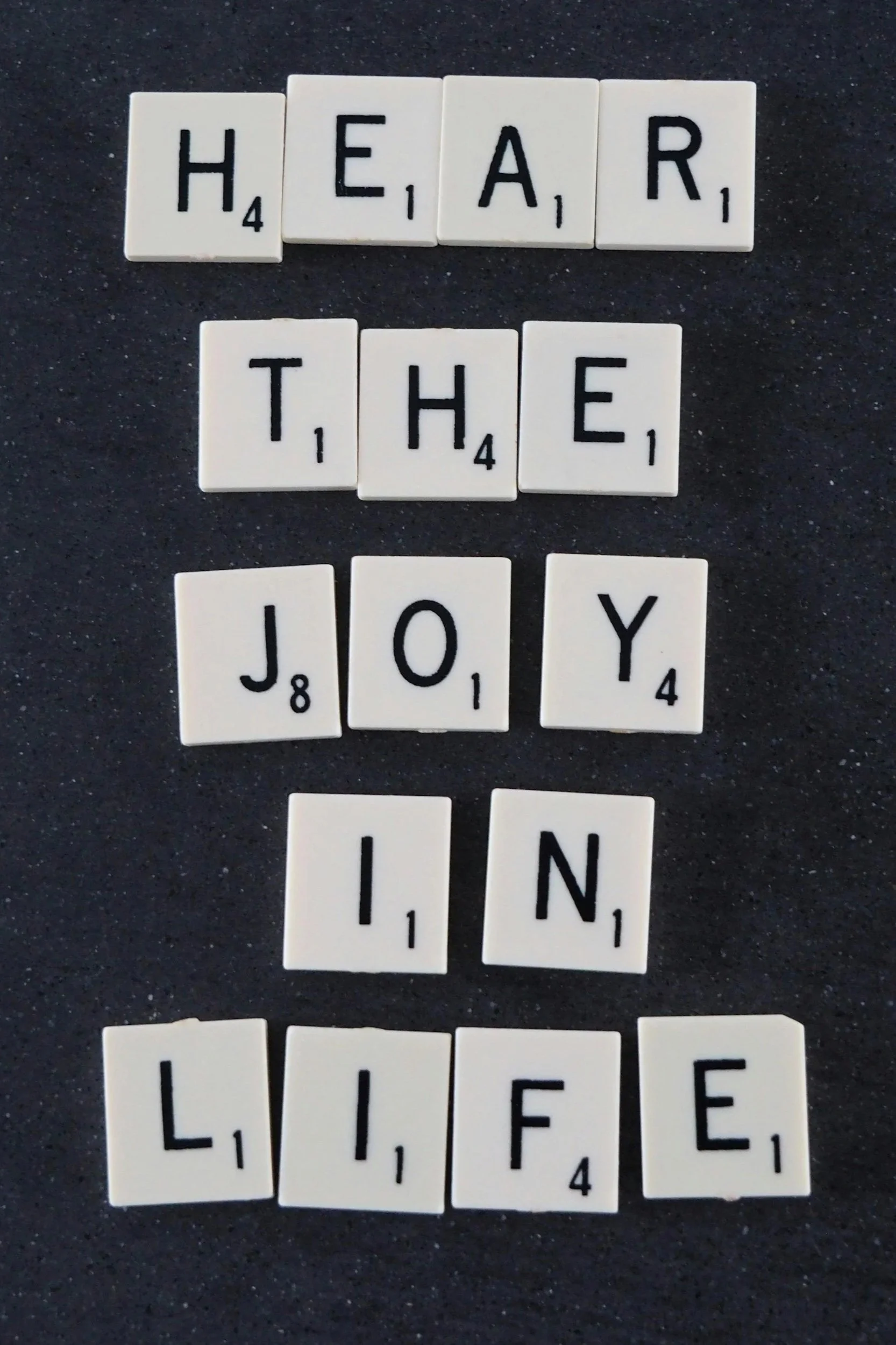11 July 2025
A holistic harmony of dementia, geraniums and yoga
2 mins
My mother has always been a very keen gardener, and luckily naturally green-fingered. As a child I would usually find her amongst her flowers and shrubs, constructing a new compost bin, pruning trees and bushes, or watering endless flowerpots and planters. Whilst her garden has been her passion, she has had other interests, although yoga has never been amongst them, and she’s shown little interest in my yoga teaching.
She is now 93 with dementia and reduced mobility, and is no longer able to dig, plant and prune. She has however, lost none of that passion for gardening. These days she has a gardener but always wants more doing. As we walk around her garden, my mother with her mobility walker, I act as her arms and hands planting, pruning, and watering wherever she spots a need or opportunity.
Last week I found myself repotting dozens of geraniums cuttings and seedlings for her, as she sat on her mobility walker next to me to ‘supervise’…(she’s never had much faith in my gardening skills…), but they looked beautiful crammed onto window ledges around her house, garage and conservatory.
Then in a beautifully yogic spirit of kindness and acceptance she said, “Why don’t you take the geraniums and give them to your students when they graduate?”. Now whilst my students don’t actually graduate because what I teach is not an accredited qualification, she knew ‘student’ meant learning something and developing as a result.
I was overwhelmed with gratitude for her generosity but more so for her long-awaited acceptance of yoga as something important to me even though she understood little about it. She didn’t realise how her spontaneous act of sharing with others was community spirited and therefore at one with the philosophy of yoga.
What I learned was that even though she had dementia some of her neural pathways were still intact for her to make the new connection between her passion for plants and my passion for yoga. I felt blessed that she was able to reach out to me and my students from her heart and share what she still had and loved.
20 September 2025
Exploring the Power of Language in Yoga?”
3 mins
Have you ever noticed how yoga teachers speak a little differently? When I first started teaching, a friend pointed it out to me. She said, “Yoga teachers… they have their own way of talking, don’t they?” Back then, I knew she was right but hadn’t really thought about why. Now, after years of teaching, I can explain it.
Language is a tool we all use to communicate, share ideas, and influence each other. It's the thread that connects us, shaping cultures and mindsets. In yoga, the words we choose can deeply impact the way students experience their practice — both physically and mentally. But there's more to it than just using special terms.
Why Does Yoga Use Its Own Language?
Yoga has a rich history rooted in ancient Sanskrit, which can feel like a language for the “elite” rather than something everyone can connect with. But yoga isn’t meant to be exclusive. It’s for everyone, no matter your background. For yoga to reach more people and help them grow, we need to make it accessible. That means updating the language and finding ways to relate timeless concepts to modern life.
Take the idea of ahimsa, or non-violence. If you're new to yoga, you might walk into class expecting physical postures, not philosophical concepts. So how do we explain something like non-violence in a way that resonates with everyone? The answer lies in finding simple, relatable ways to share these deeper ideas — so that students can connect with the spiritual side of yoga without feeling overwhelmed.
The Power of Language in Teaching
The way we speak in class can make a world of difference. The right words guide students through poses, help them tune into their bodies, and can even inspire personal growth. On the flip side, using the wrong language can create barriers or confusion, limiting the connection students have with their practice.
Words can also empower students to explore and adapt poses for their own bodies. When we use encouraging language, we invite them to listen to their bodies, discover variations that work best for them, and focus on cultivating their personal practice, rather than competing or trying to please the teacher.
Creating Connection Through Words
When a teacher uses language that encourages qualities like compassion, connection, and mindfulness, it creates a deeper, more meaningful experience. Words that help students feel grounded, present, and connected to their breath can elevate their practice from physical exercise to a holistic mind-body experience.
At the same time, sometimes silence is just as powerful as words. I love practices where I give minimal instruction. When I leave space for quiet, students often have a chance to tune into their bodies and the present moment in a deeper way. And during relaxation (Savasana), silence allows students to let go, surrender, and truly rest.
The Unintended Power of Words
As much as language has the power to heal and inspire, it can also have unexpected effects. I’ll never forget one class where I chose the theme “Joy and Celebration,” inspired by the recent birth of my grandchild. During a short meditation, I asked everyone to “Choose Joy” as an intention for their practice. But I didn’t realize that one of my students was actually named Joy! She immediately opened her eyes, confused, and looked around to see who was choosing her. When she realised her mistake she burst out laughing — and she lost her focus, but in the best possible way.
It was a perfect reminder that words, while powerful, can sometimes take on a life of their own. But that’s part of the beauty of yoga — it’s not always about getting it perfect. It’s about being present, connecting with yourself, and staying open to the experience.
Yoga is About More Than Just the Poses
When you step onto your mat or into your chair for a class, and your teacher invites you to close your eyes and check in with your body, you’re entering a safe space. It’s a chance to move from the busy outside world into the quiet of your inner landscape. The words your teacher uses, whether simple or profound, help you make that transition — grounding you, connecting you, and inviting you to just be.
Language in yoga is transformational. The right words can help you feel seen and understood, and encourage a deeper connection to both your body and your spirit. Whether it's through the language of kindness, empowerment, or silence, the way we speak as teachers can enhance the experience and leave a lasting impact.








